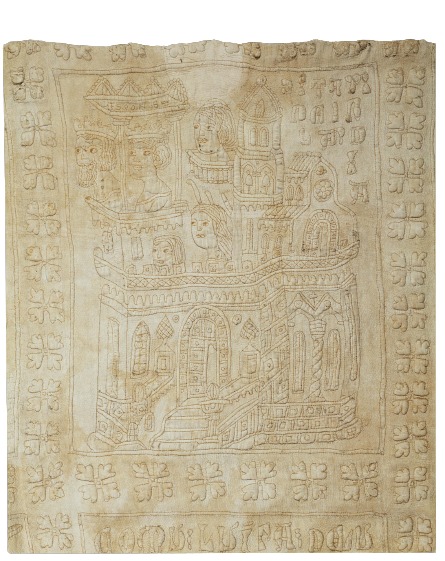The history of quilting can be traced back at least to medieval times. The Victoria & Albert Museum has early examples in its collection from Europe, India and the Far East. The word ‘quilt’ – linked to the Latin word ‘culcita’, meaning a bolster or cushion – seems to have first been used in England in the 13th century.
It was during this period that quilted bedspreads also become popular in Europe. Quilts were decorated with beautiful and intricate needlework designs, and whole-cloth quilts show a rich repertoire of this work. As the name suggests, these quilts are made from one large piece of fabric, and are beautifully stitched with complex designs.
Quilting, defines the act of stitching together two layers of fabric between padding. Quilting can be traced back as far as ancient Egypt. It seems that people wore quilted clothing as many as 5000 years ago. In the British Museum is an ivory carving from the Temple of Osiris at Abydos found in 1903 which features the king of the First Egyptian Dynasty wearing a cloak that appears to be quilted.

The first quilt recorded in history is ‘The Tristan quilt’, that was made in Sicily ca. 1360-1400.
Many examples of quilts made in ancient Asia are available to us today, and patchwork quilts occur frequently. In Europe, quilts started appearing during the Crusades, when soldiers wore quilted armour when they went to battle, and the popularity of quilted clothing rose in Europe at this time. It was during this period that quilted bedspreads also become popular in Europe. Quilts were decorated with beautiful and intricate needlework designs, and whole-cloth quilts show a rich repertoire of this work. As the name suggests, these quilts are made from one large piece of fabric, and are beautifully stitched with complex designs.

Quilting as a craft came to America with the early Puritans. Quilts were made in those early days in America to serve a purpose, to provide warmth at night and to cover doors and windows to help reduce cold. Quilts were functional, with little time for women to create decorative quilts. Often times money and other resources were limited so quilts were made with what was available, often old clothing no longer needed by family members. Worn quilts were patched together or cut apart to make another usable quilt. Those early quilts tell the history not only of early American quilting, but also the early history of the country.
In the early 1800s, whole cloth quilts became popular. The beauty of these quilts was not in the fabric or colors but in the stitching and edging work done on them. Applique became popular in the mid -1700s and peaked in popularity around 1850, but it was only the wealthy that could afford the expensive fabrics that went into these early applique quilts.

Quilting groups and guilds seem to be on the rise because women are wanting to have more “girlfriend” time with other quilters. I have spoken to quilter’s and one person said,” In my younger days, it was cross-stitch that I did and for the last 15 years, it’s been quilting”.
When World War II broke out, attention shifted to the tragedy of war. Women joined the workforce to fill the gaps left by men sent to war, and had little time to spend on quilt making and other crafts. When the war ended, women remained in the workforce, and during these years, store bought items were considered more desirable than homemade items.

However, this lull in quilting was short lived, and America experienced a revival in quilting in the 1970’s which is still ongoing. As America’s bicentennial approached, people started to take a new interest in their cultural heritage and the role of quilt making in that heritage, which impacted quilting in America enormously. It is at this time the Patriotic quilts were made to commemorate officers in bicentennial celebrations.
New tools and techniques, developed in the last 30 years, have had a major impact on quilting.
Over the years, quilting has developed into an art form of its own, and the beautiful and intricate designs of antique quilts can be seen on display in museums. Magazines and newspapers played a large role in reviving an interest in quilting during the Depression era, publishing new patterns and even putting together quilt kits, and today there are many magazines and books devoted to quilting, and these publications share new developments and trends in quilting. Computers and the internet has greatly impacted quilting around the world.
Software geared towards quilting design is continually being developed and Online quilting bees and chat rooms have sprung up all around the world as quilters share ideas and information with quilters on the opposite side of the globe. For someone new to quilting, the internet provides lot of resources and information.
Digital photography is also widely used in quilting today, as it provides new inspiration for quilters as pictures and photos are incorporated into quilts. The ability to print photos directly onto fabric has melded some aspects of quilting and scrapbooking together.
Quilting continues to evolve and expand beyond the traditional borders of quilting as new techniques and designs are developed. Technology will continue to impact this diverse art form, and as ideas are shared around the globe, the appreciation for quilting will continue to grow.
